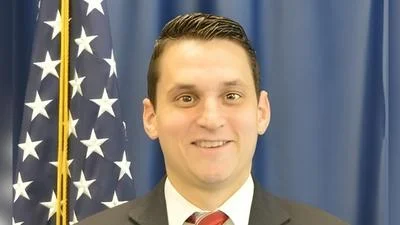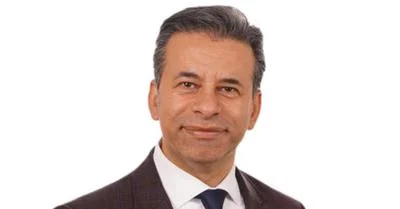The Congressional Record is a unique source of public documentation. It started in 1873, documenting nearly all the major and minor policies being discussed and debated.
“PROTECTING RAILROAD OPERATORS, TRAVELERS, EMPLOYEES, AND COMMUNITIES WITH TRANSPORTATION SECURITY ACT OF 2004” mentioning the U.S. Dept. of Energy was published in the Extensions of Remarks section on pages E1462-E1463 on July 22, 2004.
The publication is reproduced in full below:
PROTECTING RAILROAD OPERATORS, TRAVELERS, EMPLOYEES, AND COMMUNITIES
WITH TRANSPORTATION SECURITY ACT OF 2004
______
HON. ELIJAH E. CUMMINGS
of maryland
in the house of representatives
Thursday, July 22, 2004
Mr. CUMMINGS. Mr. Speaker, I, along with my colleagues Congressman James Oberstar, the Ranking Member of the Transportation and Infrastructure Committee, and Congresswoman Corrine Brown, Ranking Democratic Member of the Railroad Subcommittee, are introducing the
``Protecting Railroad Operators, Travelers, Employees, and Communities with Transportation Security Act of 2004'' (PROTECTS Act).
Since the September 11 terrorist attacks, the government has authorized over $12 billion on aviation security. Railroad and transit agencies were authorized to receive $65 million in security grants in 2003 and $50 million in 2004. Clearly, this disparity in security funding is unacceptable. We cannot afford to put a price tag on safety. We cannot leave our railroads vulnerable to attack. Nearly five times as many people take trains as planes every day. Our bill authorizes nearly $1.3 billion to protect passenger and freight railroads and the communities they serve.
I have grave concerns regarding the vulnerability of our national rail and transit systems. A documented one-third of all terrorist attacks worldwide have targeted railroads and other surface transportations systems. The United States rail network touches every major urban center and hundreds of smaller communities in between. Millions of tons of hazardous materials are shipped yearly across the United States. A large portion of these shipments is transported by rail, sometimes through densely populated areas, increasing the concern that attacks or accidents on these shipments could have severe consequences. Additionally, the 3,000 to 3,300 railroad shipments of spent nuclear fuel from 39 states that the Department of Energy plans to deposit in Yucca Mountain over the next 24 years, highlights the need for stringent rail security to guard against such incidents.
Based on recent numerous rail attacks around the world, terrorists seem to have expressed a proclivity for attacking rail systems. Between 1998 and 2003, there were 181 attacks on trains and related targets such as depots, ticket stations and rail bridges worldwide. Lack of screening and inadequate safeguards in the transportation of explosives, chemical, biological and radiological agents have created major vulnerabilities in our rail transportation system. These vulnerabilities are all largely un-addressed.
The challenge of protecting our railroads is a daunting one. The demands on our system to deliver travelers and freight safely, quickly, and efficiently make our task all the more difficult. However, these goals are achievable. Failure on this mission is not an option.
The PROTECTS Act authorizes over $1 billion to help secure our national rail system against terrorist threats. $500 million is authorized for grants to wholly or partially reimburse State and local governments, railroad carriers and rail labor for the development and implementation of increased security measures.
The tragic terrorist attack on a commuter train system in Madrid earlier this year was a urgent reminder of our need to implement safety measures to secure our national rail transportation system. Washington's Union Station, and New York's Penn Station, both have very high volumes of pedestrian traffic that include a mix of Amtrak travelers and daily commuters. Inadequate security measures put these travelers at risk. Our bill authorizes $597 million for Amtrak to address fire and safety issues in tunnels in New York, NY, Baltimore, MD, and Washington, DC. In addition, $65 million is authorized for Amtrak system-wide security upgrades.
It is particularly disturbing that the federal government has yet to complete a national, risk-based threat management plan for preventing attacks upon our nation's rail system. The GAO report, ``Rail Safety and Security: Some Actions Already Taken to Enhance Rail Security, but Risk-Based Plan Needed,'' which I, along with my colleagues Jim Oberstar, Henry Waxman, and Marty Meehan requested in 2001, concluded that ``the adequacy of this industry plan to protect communities and the railroad infrastructure is still unclear since the Transportation Security Administration lacks the framework for systematically evaluating and prioritizing actions needed to ensure the safety and security of the transportation of hazardous materials by rail.''
The PROTECTS Act authorizes grants to State and local governments and emergency responders for proper equipment and protective gear for hazardous material incidents. In addition, the act ensures that responders are properly trained and are familiar with the different types of hazardous materials that pass through and are stored in their communities.
A clear comprehensive industry plan is needed to protect communities and rail infrastructure. With 530 rail stations throughout the country--some of those no more than open platforms where passengers can walk freely onto the train--stringent airport-like security measures are not possible. However, the PROTECTS Act will ensure that the necessary steps to address security vulnerabilities on our rail system are implemented and that a comprehensive plan is developed.
The National Commission on Terrorist Attacks Upon the United States
(9/11 Commission) in their report that was released today concludes that the United States needs to develop strategies for neglected parts of our transportation security system. Also, the report recommends that we address problems of biometric screening between agencies and governments, including border and transportation systems. Our bill provides funding and authorizations to aid such efforts.
We got an urgent wake up call on September 11, which we answered. The commuter rail station bombing in Madrid was a second wakeup call. The PROTECTS Act is how we will answer that call. We have to do all that we can to secure America and its citizens against terrorists' threats. Why wait for the other shoe to drop, we need to act now to protect rail and rail passengers before we wake up to another tragic terrorist incident.
____________________








